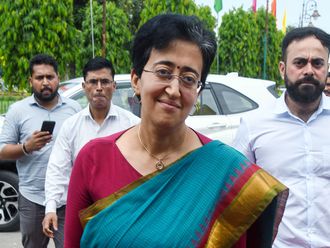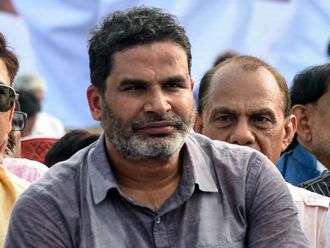If the US is to have a sustainable toehold in Asia, Washington has to start paying serious attention to some countries in the region that are not China or India.
There are 10 other countries in particular that hold the key to America's central role in all of Asia. That's why President Barack Obama must follow through on his overtures to the region and carve out time to attend the second US-Asean summit, this year.
The Association of Southeast Asian Nations (Asean) began in 1967 to accelerate economic growth and collaboration in the region. The group is made up of 10 countries: Brunei Darussalam, Cambodia, Indonesia, Laos, Malaysia, Myanmar, the Philippines, Singapore, Thailand, and Vietnam.
About 650 million people live in the region, and each year gross domestic product adds up to around $1.5 trillion. The Philippines and Thailand are two longtime US treaty allies. According to the latest US Department of Commerce figures, which were for 2008, the US had $153 billion invested in Asean, $53 billion in China, and $14 billion in India.
Strategically, strong relations with Asean are vital to American interests in Asia. Both Obama and Secretary of State Hillary Clinton seem to be starting to recognise this. Clinton outlined core US principles for Asian regional architecture in Honolulu earlier this year. And Obama signed the Asean Treaty of Amity and Cooperation and declared that US interests in Southeast Asia are significant enough for annual presidential focus.
But lip service is only a beginning.
Strong ties with Asean are the metaphorical equivalent of strong core muscles. They are fundamental to the effective functioning of the other vital aspects of US policy in Asia, including engaging, supporting, and balancing the rapid transformation of both China and India onto the regional and global stage.
Obama has a lot to gain from attending the US-Asean Leaders Summit. He himself initiated the first US-Asean Summit last November in Singapore.
Good strategy
It was the first time a US president met directly with the leaders of all 10 Asean countries. And it was a smart move. Asean meets regularly with China, Japan, Korea, Australia, New Zealand, and India.
Major milestones from those summits include:
- Effective regional economic integration — Asean now has free-trade agreements with all of the aforementioned countries.
- The beginning of regional security architecture.
- Transnational issues — such as climate change and nuclear nonproliferation.
If the US is absent, it could be excluded from a future Asian ‘consensus' on such key issues.
If he attends, however, Obama could continue to rack up support for America's positions.
He could also make substantial progress on trade by supporting increased Asean involvement in the Transpacific Partnership — one of very few trade arrows in the administration's quiver. Doing so would link US economic growth to Asia, which is expected to grow at more than two times the rate of the western economies over the next several years, according to the World Bank.
By initiating the first US-Asean Summit, Obama laid down a clear marker that America recognised its significant stake in Southeast Asia and wasn't ceding the region to China's nouveau Monroe Doctrine.
If he cannot make it to the summit, Obama could convince the Asean leaders to meet him in Hanoi after the Asia-Pacific Economic Cooperation Summit in Japan in November. Another option is to invite them to Washington or Hawaii before or after the annual United Nations General Assembly meeting in September. A third option is to piggyback on his visits to Indonesia, Australia, and Guam in June or to India in October.
If Obama fails to show up it would be a serious blow to relations in Asia. It would not only fulfil predictions made by China that the US is only rhetorically, not substantively, committed to the region.
Making time for the Asean summit may seem like a small thing, but Obama's attendance would benefit the US in the long run.
Ernest Z. Bower is director of the Southeast Asia programme at the Centre for Strategic and International Studies in Washington.









